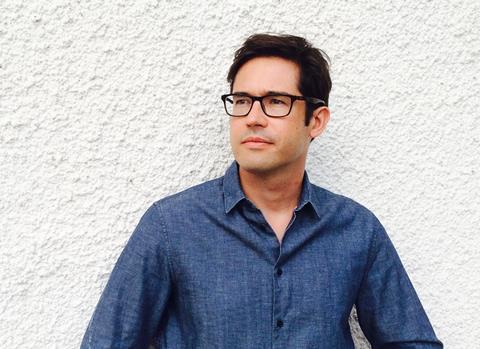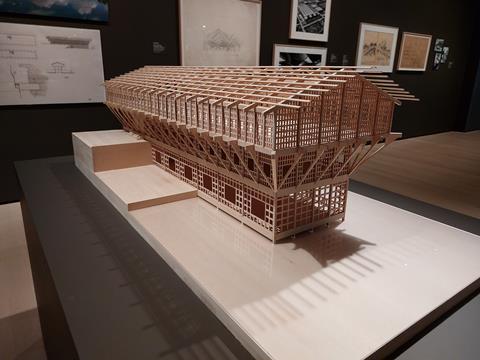New York museum seeks to put region’s architecture in a post-colonialist context, writes Ben Flatman

I have mixed feelings about MoMA and its relationship to architecture. Its first head of architecture, the former Nazi-sympathiser Philip Johnson, famously curated theModern Architecture exhibition in 1932that helped to distil architectural modernism into the “international style”.
Johnson arguably did more than anyone else to turn what had been a diffuse and varied movement into something far more sterile and commodifiable. Smoothing over regional diversity and stylistic heterogeneity, he oversaw the development of the dominant strain of modernist architecture to the point where it became the house style of globalised corporate capitalism.
The curation of MoMA’s current show, The Project of Independence: Architectures of Decolonization in South Asia, 1947-1985, has echoes of that earlier 1932 exhibition. A very conventionally presented mix of archive and newly commissioned photographs, alongside drawings and models, seeks to highlight how second-generation modernist architects in early post-colonial south Asia grappled with the opportunities and inherent limitations of modernism in the building of new nations, cities and political identities.
At the heart of the exhibition is the on-going debate around what modernism symbolised in the early post-colonialist context. Earlier critiques have focused on the way in which the adoption of architectural modernism – often rather simplistically seen as a western cultural imposition – simply represented a continuation of colonial constructs and westernised norms.
More recently, scholars have sought to highlight the agency with which post-colonial artists and architects wielded modernism – turning it to their own ends to convey new meaning and relevance to specifically south Asian places and contexts.
As much as I admire the UK’s role in supporting cultural relations globally, there was always a slight whiff
of neo-colonialism emanating from the work that I was engaged in
It is a fascinating debate for me personally, not least because I have spent the past decade working for a leading UK cultural organisation on a range of projects across south Asia. I have helped to build libraries in Karachi and Lahore and teaching centres in Dhaka and Jaffna, working with some of the region’s leading contemporary architects.
And, as much as I admire the UK’s role in supporting cultural relations globally, there was always a slight whiff of neo-colonialism emanating from the work that I was engaged in. Underlying Britain’s international promotion of its universities and of theEnglish language, there was an abiding sense that (at least in part), the purpose was to perpetuate the old colonial power’s status and influence in places where those historical ties were becoming ever weaker.
The MoMA exhibition highlights the way in which modernism symbolised a break from British rule. It thoroughly rejects the suggestion that south Asians were simply the naive devotees of Corbusier and Kahn. It emphasises not only the way in which south Asian architects themselves made modernism their own, but also the uniquely localised ways in which contractors and labourers adapted to – and became highly adept at – new forms of construction.
The case is made that, far from being an alien import, modernism was an idiom through which south Asia’s architects and states explored their own newfound freedoms and sense of identity. The exhibition might have also made more of existing south Asian modernist movements in literature and art, notably in 19th and early 20th-centuryBengal. In other words, architectural modernism was not something done to south Asians but rather a language that was enthusiastically embraced and grounded in the region itself.
The exhibition featuresModest Homes, a 1954 film about that year’s international exhibition on low-cost housing in Delhi. Produced by the films division of the Indian government, it has a British voice-over and the same air of forced joviality as many British government documentaries of the time.

德里展览要求所有房屋的价格不超过5000卢比。现代主义只是姗姗来迟地发现了可持续住宅和气候适应的必要性,许多住宅都有遮阳、自然通风,甚至大量使用了竹子等可再生材料,这削弱了这种观点。Yasmin Lari的早期现代主义作品出现在展览中,突然间,他看起来不像是一个生态开拓者,而更像是一个更悠久传统的继承人。
现代艺术博物馆的展览在1985年中断,被认为是现代主义在很大程度上未实现的乌托邦承诺受到新殖民主义和文化认同与差异的新表达的批评的时刻。当然,这些争论一直持续到今天,渗透到建筑和更广泛的文化中。

Appropriately, the exhibition highlights how, from an early stage, many south Asian architects were working to rediscover some of modernism’s regional specificity that Johnson had sought to erase. Most notably, Geoffrey Bawa mixed modernism, the vernacular and climatically appropriate adaptations to create a specifically Sri Lankan architecture that has since had a massive impact on generations of architects across Asia.
Despite India, Pakistan and Bangladesh all once having been part of British India, south Asia is today one of theleast economically integrated regionsin the world. And yet it is evident that many of the same debates around the legacy of architectural modernism have been cutting across borders for decades. Once rejected, modernism has now been rediscovered and widely reinterpreted across the region.
It is also wonderful to see the work of Bangladeshi modernist pioneerMuzharul Islam在这次展览中,他的达卡工艺美术学院和吉大港大学都获得了突出的地位。伊斯兰教的作品现在在孟加拉国受到广泛欢迎,并对另一代年轻的建筑师产生了巨大的影响。
With his extensive use of brick, and interest in climatically appropriate design, his legacy is clearly evident in the work of the renowned Bangladeshi architects Marina Tabassum and Kashef Chowdhury. In the work of Tabassum and Chowdhury we see the clearest evidence that modernism was always immeasurably more than some colonial hangover.
或许,在南亚最年轻的后殖民国家孟加拉国,作为独立和身份表达的建筑现代主义探索仍然是最恰当的。
Postscript
The Project of Independence: Architectures of Decolonization in South Asia, 1947-1985 runs until 2 July at MoMA, New York
















No comments yet